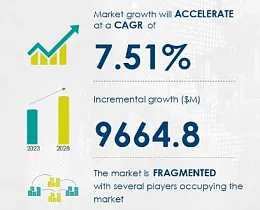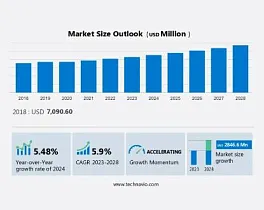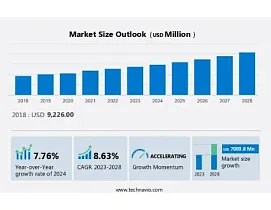The report "Heat Exchanger Market by Type (Shell & Tube, Plate & Frame, Air Cooled), Material (Metal, Alloys, Brazing Clad Materials), End-Use Industry (Chemical, Energy, Hvacr, Food & Beverage, Power, Pulp & Paper), and Region - Global Forecast to 2029", is projected to reach USD 32.3 billion by 2029, at a CAGR of 7.0% from USD 23.0 billion in 2024.
The Heat exchangers market is driven by increasing industrialization in emerging economies, rising energy efficiency regulations and stringent emission standards, growing demand for HVACR equipments for commercial construction and rising demand for sustainable, low energy consuming, cost-effective heat exchangers.
Metals is projected to be the fastest growing material of heat exchangers, in terms of value, during the forecast period
Metals are the largest materials used for heat exchangers, with aluminium, stainless steel, titanium, and copper being some of the most common choices. Metals generally have high thermal conductivity, which is crucial for efficient heat transfer in heat exchangers. Many metals like stainless steel, titanium, and nickel-based alloys have high mechanical strength and can withstand the high temperatures, pressures, and corrosive environments often encountered in heat exchanger applications.
Shell & Tube is the largest type of the heat exchangers, in terms of value
Shell and tube heat exchanger is the most commonly used type due to its efficiency in heat transfer, versatility, ease of maintenance, resistance to thermal shocks, wide range of applications, and the large heat-transfer surface it offers per unit of volume and weight. These heat exchangers offer efficient heat exchange rates due to their design, allowing for the movement of fluids through tubes and the exterior shell, facilitating effective heat transfer between fluids. Shell and tube heat exchangers are designed for easy disassembly, cleaning, and repair, making maintenance straightforward. Their flexible design allows for modifications in tube pitch, arrangement, length, number, and diameter, ensuring adaptability to different applications.
Europe captures the largest share in the heat exchangers market during the forecast period, in terms of value
Europe has a diverse and well-established industrial base, including sectors such as chemical processing, oil and gas, power generation, food and beverage, and HVAC (heating, ventilation, and air conditioning). These industries have significant demand for heat exchangers across various applications, driving the market growth. European countries have some of the most stringent environmental regulations in the world. Heat exchangers are crucial for compliance with these regulations, as they help industries improve energy efficiency, reduce greenhouse gas emissions, and minimize waste heat. The need to adhere to environmental standards drives the demand for advanced heat exchanger technologies in Europe.
Mergers, new product launches and expansions are the major growth strategies adopted by the key players in the market. The key global players in the heat exchangerss market include ALFA LAVAL (Sweden), Kelvion Holding GmbH (Germany), Danfoss (Denmark), Exchanger Industries Limited (Canada), Mersen (France), API Heat Transfer (US), Boyd (US), H. Güntner (UK) Limited (Germany), Johnson Controls (Ireland), Xylem (US), Wabtec Corporation (US), SPX FLOW (US), LU-VE S.p.A. (Italy), Lennox International Inc. (US), and Modine Manufacturing Company (US).
Read More




